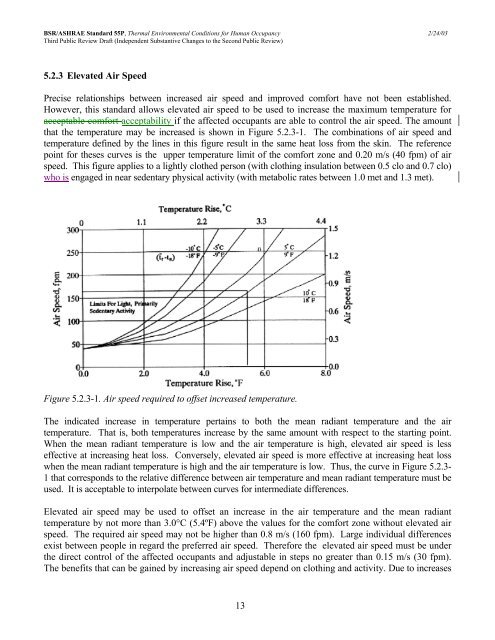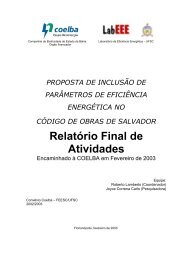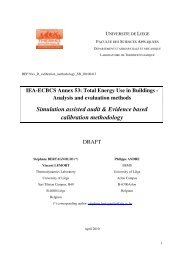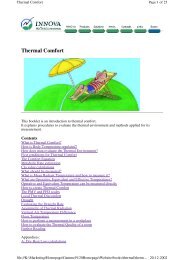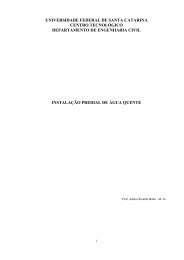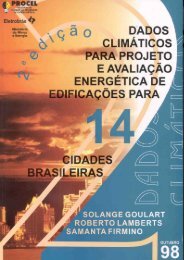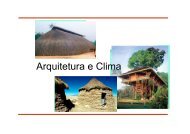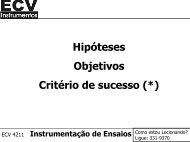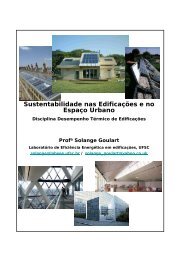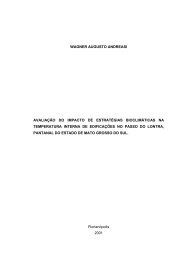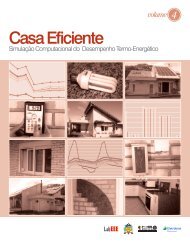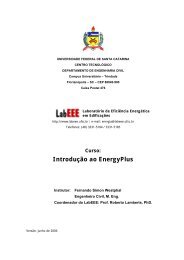ASHRAE STANDARD - 55R
ASHRAE STANDARD - 55R
ASHRAE STANDARD - 55R
You also want an ePaper? Increase the reach of your titles
YUMPU automatically turns print PDFs into web optimized ePapers that Google loves.
BSR/<strong>ASHRAE</strong> Standard 55P, Thermal Environmental Conditions for Human Occupancy 2/24/03<br />
Third Public Review Draft (Independent Substantive Changes to the Second Public Review)<br />
5.2.3 Elevated Air Speed<br />
Precise relationships between increased air speed and improved comfort have not been established.<br />
However, this standard allows elevated air speed to be used to increase the maximum temperature for<br />
acceptable comfort acceptability if the affected occupants are able to control the air speed. The amount<br />
that the temperature may be increased is shown in Figure 5.2.3-1. The combinations of air speed and<br />
temperature defined by the lines in this figure result in the same heat loss from the skin. The reference<br />
point for theses curves is the upper temperature limit of the comfort zone and 0.20 m/s (40 fpm) of air<br />
speed. This figure applies to a lightly clothed person (with clothing insulation between 0.5 clo and 0.7 clo)<br />
who is engaged in near sedentary physical activity (with metabolic rates between 1.0 met and 1.3 met).<br />
Figure 5.2.3-1. Air speed required to offset increased temperature.<br />
The indicated increase in temperature pertains to both the mean radiant temperature and the air<br />
temperature. That is, both temperatures increase by the same amount with respect to the starting point.<br />
When the mean radiant temperature is low and the air temperature is high, elevated air speed is less<br />
effective at increasing heat loss. Conversely, elevated air speed is more effective at increasing heat loss<br />
when the mean radiant temperature is high and the air temperature is low. Thus, the curve in Figure 5.2.3-<br />
1 that corresponds to the relative difference between air temperature and mean radiant temperature must be<br />
used. It is acceptable to interpolate between curves for intermediate differences.<br />
Elevated air speed may be used to offset an increase in the air temperature and the mean radiant<br />
temperature by not more than 3.0°C (5.4ºF) above the values for the comfort zone without elevated air<br />
speed. The required air speed may not be higher than 0.8 m/s (160 fpm). Large individual differences<br />
exist between people in regard the preferred air speed. Therefore the elevated air speed must be under<br />
the direct control of the affected occupants and adjustable in steps no greater than 0.15 m/s (30 fpm).<br />
The benefits that can be gained by increasing air speed depend on clothing and activity. Due to increases<br />
13


